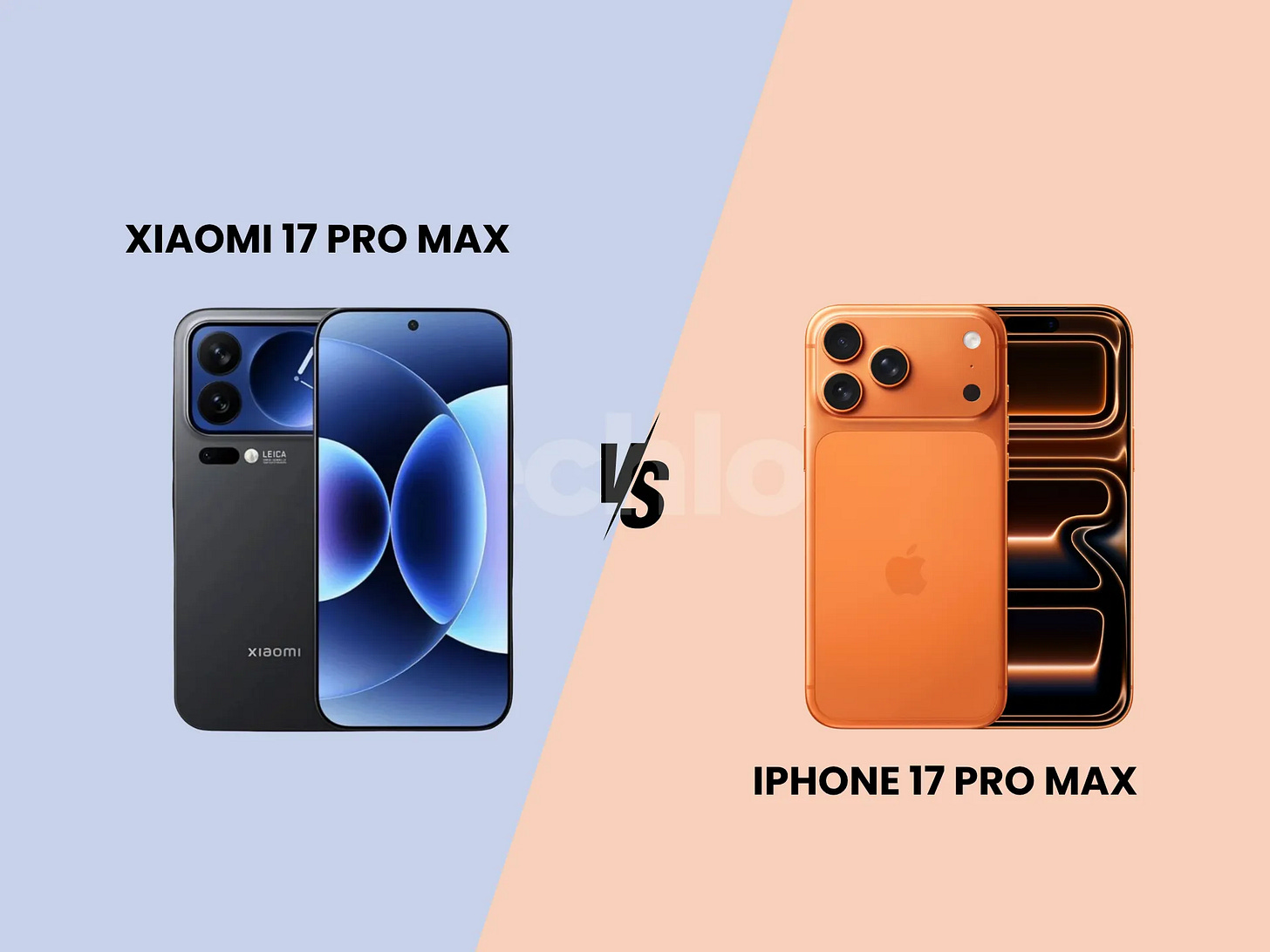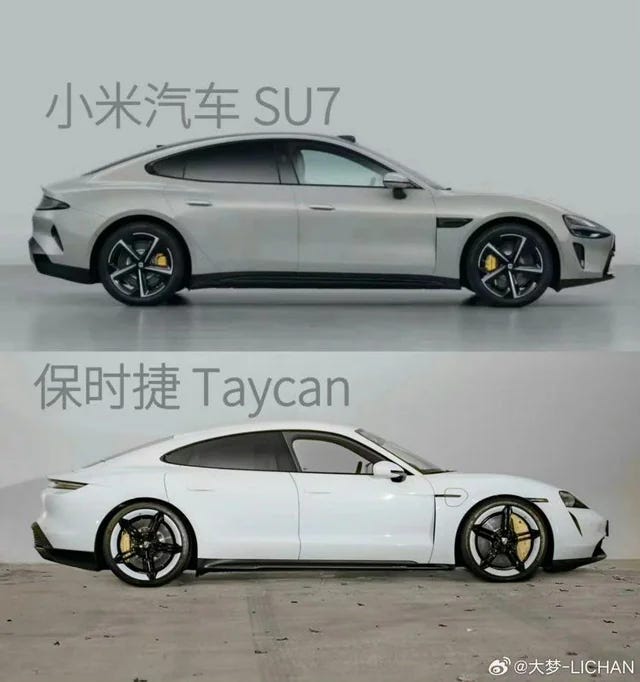Xiaomi’s share price has faced a significant correction recently, pulling back over 26% from its September peak. After the upbeat sales momentum and investment sentiments since the second half of 2024—driven by both consumer electronics and its YU7 EV launch—investor sentiment in China’s largest consumer IoT company has cooled since October.
The correction is not without catalysts.
The most notable driver is the operational reality of its EV business. The initial-year buzz from the new SU7 sedan has given way to harsh facts, including a growing consumer backlash following a fatal accident in Chengdu in October, where a Xiaomi SU7 reportedly lost control, crashed into a greenbelt, and subsequently caught fire. This incident has sparked a PR crisis over its smart driving features. (Unfortunately, at the time of writing this newsletter, another Xiaomi SU7 was reported to catch on fire in Changzhou on November 10.) This latest fatal accident re-ignited skepticism among consumers, following another fatal accident in March this year, as well as an incident in May where hundreds of owners demanded refunds over “false advertising” regarding a cosmetic-only carbon fiber hood on the SU7.
On the smartphone front, the launch of its new flagship series, the Xiaomi 17, also stoked controversy among consumers. The Xiaomi 17’s design is obviously similar to the iPhone 17, and the company strategically released the models on September 27, only 10 days after the iPhone 17’s purchase availability date, a clear move to aggressively compete with Apple in the Chinese market. Lei Jun, CEO of Xiaomi, was also quite upfront with the company’s ambition to rival Apple for the leading position in the smartphone market, stating: “The comprehensive benchmarking (to iphone) we propose is not just about configuration and parameters, but about matching, and even surpassing, Apple in areas like technological leadership and user experience“. As a matter of fact, Xiaomi’s new series should have been named the Xiaomi 16, following the previous 15 series sequentially, but the company intentionally skipped the “Xiaomi 16” naming.

Although the Xiaomi 17 series indeed has some specs, such as its periscope camera, earning praise, the design has also been met with mixed reactions from consumers, with some dismissing its design as a “counterfeit” or “copycat” of the iPhone. Such controversy is not new—Xiaomi previously received the same mixed reaction when it launched the SU7, which looks almost exactly like the exterior design of the Porsche Taycan.
So, after the share price’s significant correction, it’s now time to investigate whether what we are seeing is a sentiment-driven dip or the beginning of a larger normalization. Specifically, do consumers buy the idea of the Xiaomi 17, and what are the real performances of Xiaomi’s EV business?
To answer this, we again share the equity research piece from our partner Horizon Insights, a respected independent research provider based in Shanghai. The research focuses specifically on Xiaomi’s Q3 performance, which draws insights from Horizon Insights’ dealer survey channel research. The equity research covers the performance of Xiaomi’s 17 series, its core business (smartphones, major appliances, etc.), and the new EV business.
You may also want to check out Horizon Insights’ equity coverage list and their sample reports.
About Horizon Insights —Established over a decade ago, Horizon Insights is dedicated to delivering in-depth, cycle-aware insights into Chinese assets. Our core team comprises well-regarded investment research professionals who have been working closely together for almost two decades and have earned the trust of over 1,000 institutional and professional investors worldwide. Our research is recognized for its independence and foresight, grounded not in noise but in long-term conviction and depth. We’re grateful to connect with you through this Newsletter, and we look forward to ongoing, thoughtful dialogue.
Horizon Insights | Xiaomi Q3 2025 Dealer Survey
Key findings from channel research
Q3 performance marked by year-on-year growth but quarter-on-quarter decline; single-store efficiency weakened amid network expansion. In Q3 2025, Xiaomi’s overall regional revenues registered varying degrees of year-on-year growth, primarily driven by the expansion of retail outlets and the launch of new smartphone models. However, on a quarter-on-quarter basis, several regions showed clear signs of pressure, most notably Henan and Guangdong, where sales fell significantly due to the withdrawal of government subsidy programs and front-loaded consumer spending in prior quarters. While the Southwest region achieved structural growth, same-store performance remained largely flat. Overall, Xiaomi’s Q3 growth was volume- and product-driven rather than efficiency-driven, with scale expansion and smartphone launches as the key contributors rather than productivity gains per store.
Xiaomi 17 series emerged as the primary growth engine in Q3, accelerating the brand’s premiumization trajectory. The newly launched Xiaomi 17 series acted as the core growth catalyst for the smartphone business during the quarter. First-month sales were approximately 30%–50% higher than those of the Xiaomi 15 series, reflecting a sustained shift in the product mix toward mid-to-high-end models. Dealers across multiple regions reported a significant rise in the Pro and Pro Max model share, accompanied by a notable increase in average selling price (ASP). Consumers demonstrated growing recognition of Xiaomi’s brand value and product experience. The premiumization trend was driven not only by product improvements but also by upgraded brand perception, targeted subsidy incentives, and a more sophisticated offline sales strategy. Xiaomi’s foothold in the premium market has thus shown substantive progress.
The phase-out of national subsidy programs weighed heavily on major appliance sales, though structural upgrades toward premium products continued. The major appliance segment underperformed in Q3, mainly due to the sharp reduction or termination of the national “Home Appliance Subsidy” policy, which hit subsidy-dependent categories such as TVs and air conditioners the hardest. Following the high base of 2024, the policy rollback led to both year-on-year and quarter-on-quarter declines in multiple regions. Nevertheless, structural upgrades toward higher-priced products were evident — even without subsidies. Premium product sales accounted for a much higher proportion than in previous years. Dealers expect the subsidy effect to persist through Q1–Q2 2026, after which they anticipate steady normalization and renewed growth in consumer demand for home appliances.
Xiaomi’s auto business cooled in Q3 amid delivery delays and negative publicity, though long-term confidence remains. Following the strong initial sales surge of the YU7 model in Q2, Xiaomi’s auto sales dropped by over 60% across several regions in Q3. The main reason was the prolonged delivery cycle, which caused substantial customer attrition during the waiting period. Additionally, negative public sentiment and heightened competitive pressure since September have further dampened short-term sales momentum. Nevertheless, dealers remain cautiously optimistic about the medium-to-long term, citing solid product competitiveness and positive consumer feedback as reasons for confidence in the brand’s potential recovery beyond 2026.
Xiaomi 17 series launch weekend channel survey: Total sales are up 15–50%; Pro Max share exceeds expectations at 35–60%
Horizon Insights conducted dealer interviews across Sichuan, Guangdong, Shanghai, and Zhejiang to assess in-store sales performance during the first weekend following the September 25 launch of the Xiaomi 17 series.
Across these regions, same-store sales increased year-on-year by 25%, 50%, 50%, and 15%, respectively. The Pro Max models emerged as the primary growth driver. Dealers indicated that actual growth could have been higher had inventory levels been sufficient.
The Xiaomi 17 series demonstrated a clear structural shift in product mix. The Pro Max models became the best-selling variants, followed by the Pro and standard editions. During previous launches (Xiaomi 14–15 series), the standard edition accounted for over 50% of total sales; this share has now dropped to 25%–35%, while Pro Max has risen to 35%–55%. Most stores reported stock shortages for Pro Max models. Dealers widely believe that with adequate supply, the Pro Max share could exceed 50% of total sales.
Immediately after the launch event, online discussions were polarized, centering on issues such as cross-generation naming, rear-display design, and marketing claims. However, offline performance told a different story — while some customers humorously mentioned these topics in-store, conversion from trial to purchase remained smooth. Dealers reported a sharp rise in store traffic, including from non–Mi users, as well as Huawei and Apple users, who came to test the new models. Although detailed conversion metrics were unavailable, dealers noted no significant difference in purchase intent between returning and new customers. Importantly, Xiaomi’s growing brand equity through its auto business over the past two years has enhanced consumer confidence and positively influenced smartphone sales, providing cross-category brand endorsement.
Dealers observed a roughly equal gender split (50/50) among buyers, with female customers showing particular interest in the Pro series’ rear-display design, which was viewed as novel and stylish. Many expressed willingness to pay for aesthetic value and design appeal. Consumers also provided positive feedback on frame quality, hand feel, and system smoothness. Dealers widely agreed that Xiaomi’s premiumization efforts have achieved tangible progress in 2025, although the brand has yet to fully penetrate the core high-end user base dominated by Apple and Huawei. Nevertheless, entry-level Apple/Huawei users and customers of OPPO and vivo were more receptive to switching, suggesting that Xiaomi’s expansion into adjacent premium segments is gaining traction.
Xiaomi dealer survey — Q3 2025: sales show YoY growth or remain flat, but decline noticeably QoQ
Xiaomi’s overall sales performance in Q3 2025 exhibited a pattern of year-on-year growth but quarter-on-quarter contraction.
For inquiries or collaboration, contact us by replying to this email or at: subscribe@hzinsights.com



